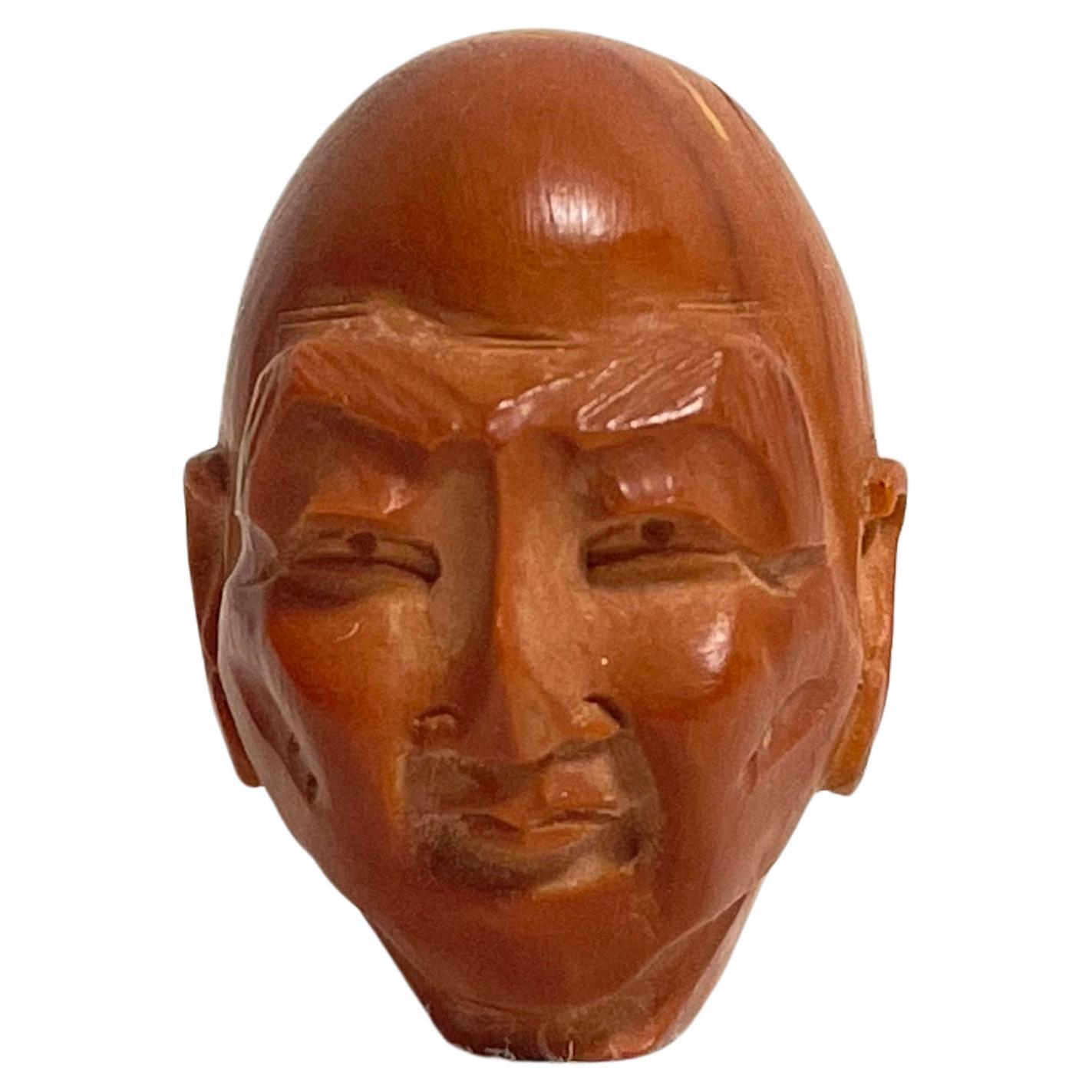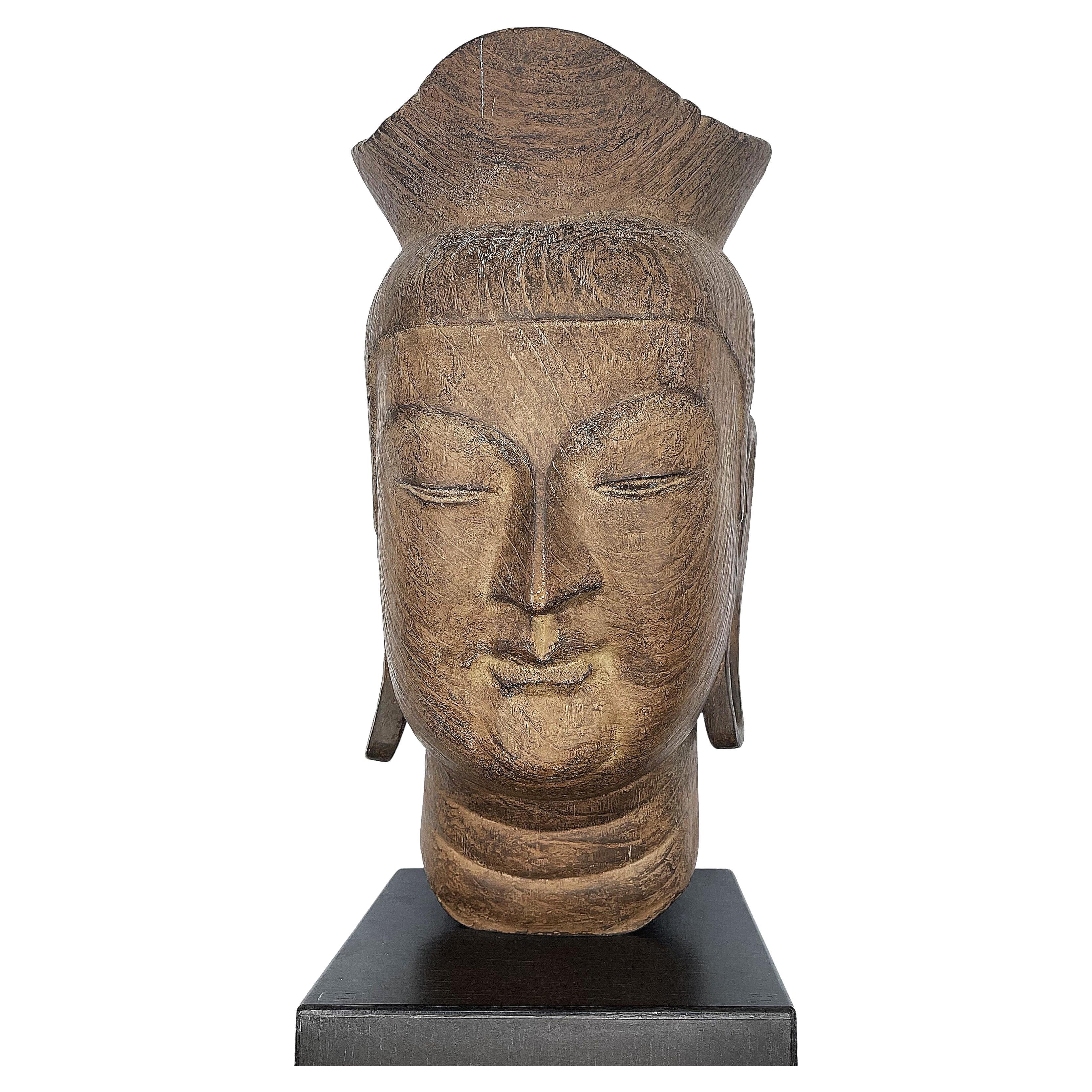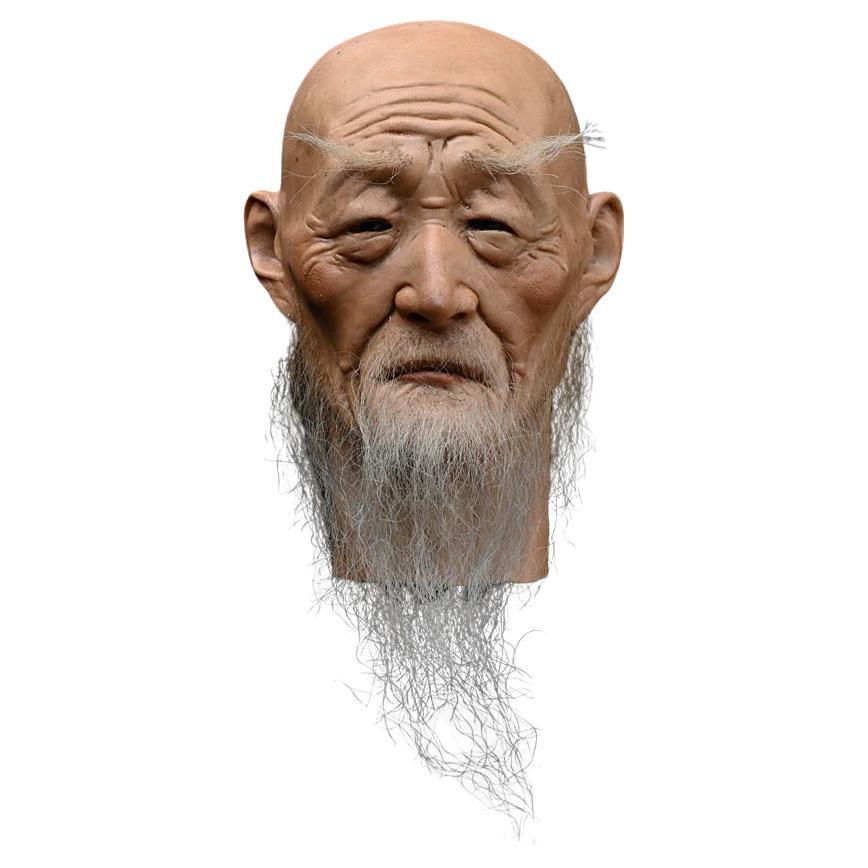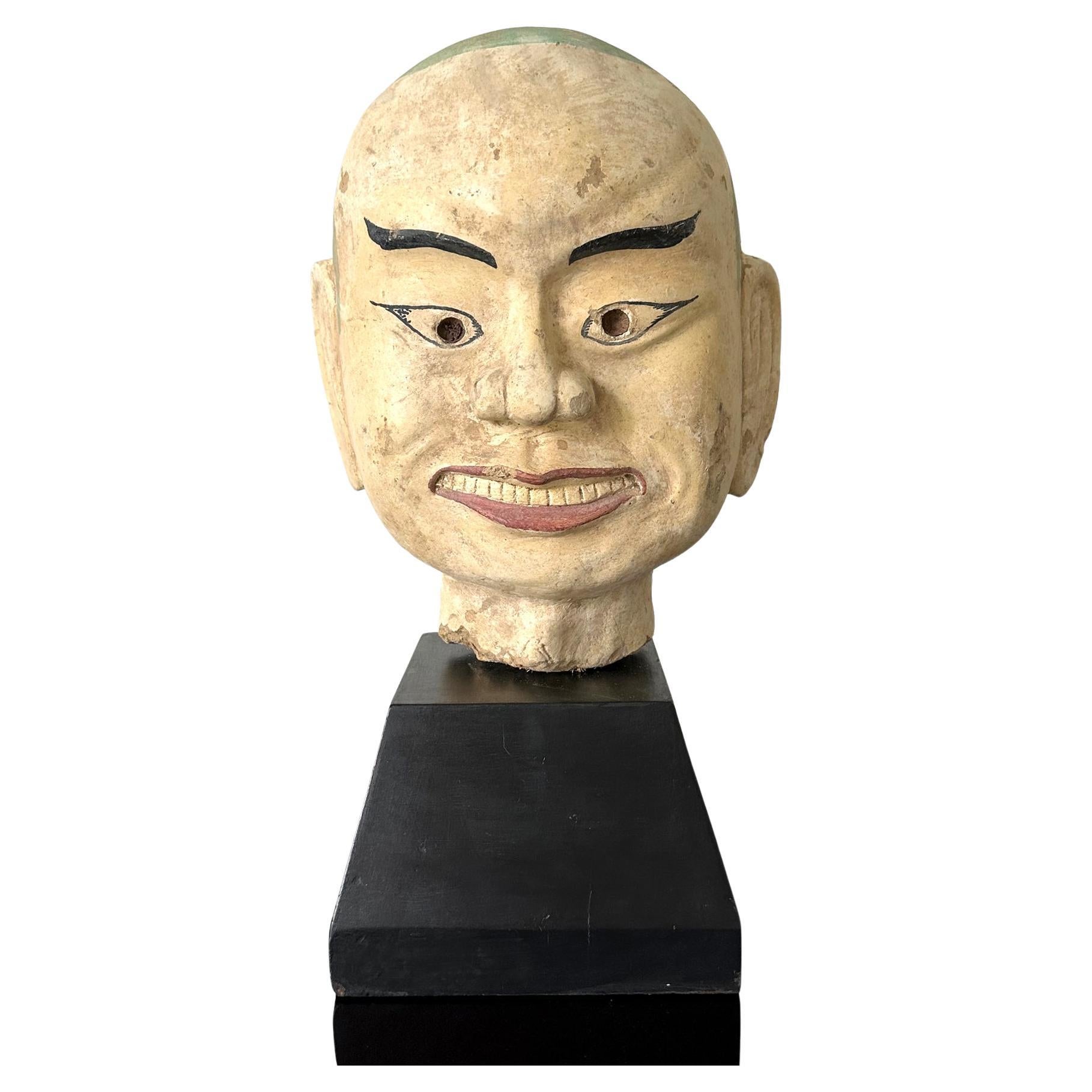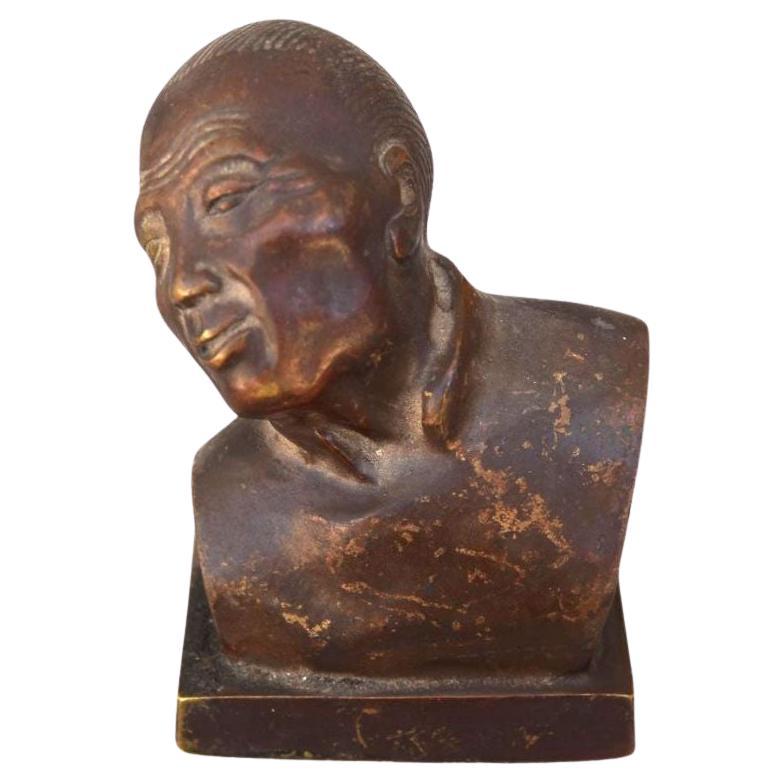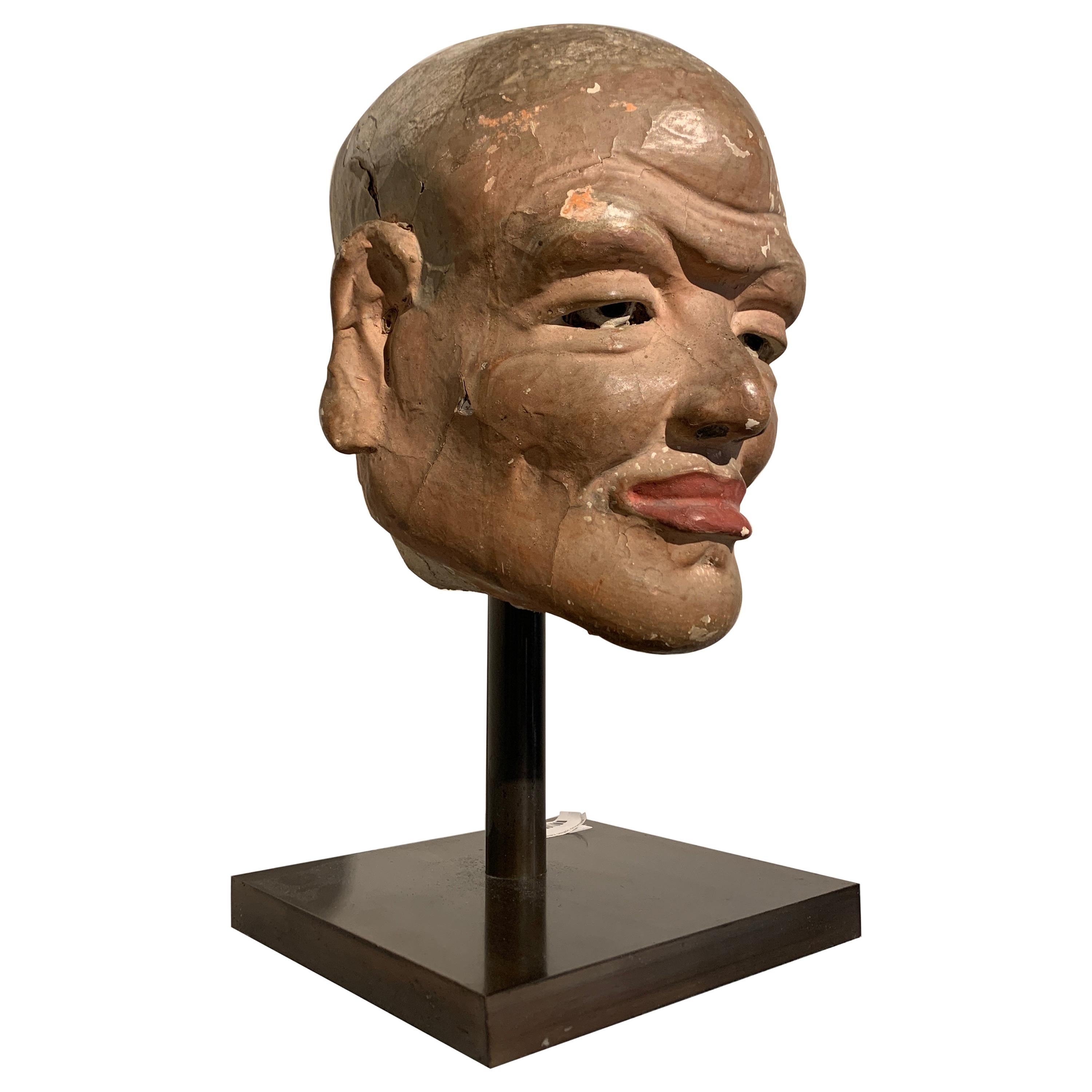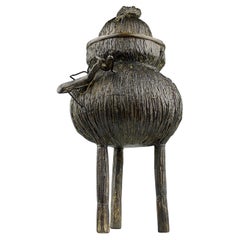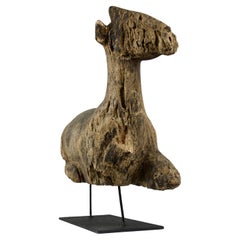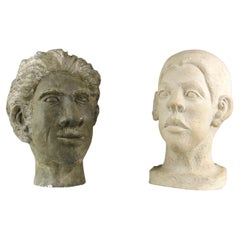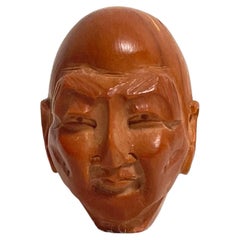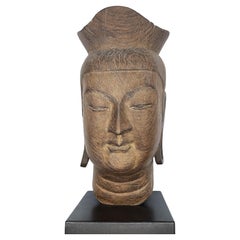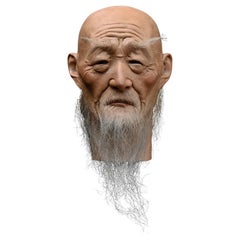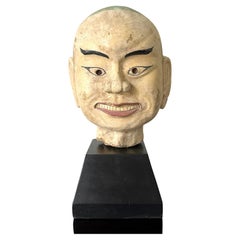Items Similar to Monk Head Bamboo and Glass Sculpture, Japan 19th Century, Edo Period
Want more images or videos?
Request additional images or videos from the seller
1 of 10
Monk Head Bamboo and Glass Sculpture, Japan 19th Century, Edo Period
$5,651.18
£4,262.03
€4,850
CA$7,813.25
A$8,752.16
CHF 4,596.95
MX$106,423.40
NOK 58,212.38
SEK 55,259.20
DKK 36,921.37
About the Item
Superb bamboo sculpture with glass eyes of a Japanese monk. Japan, 19th century, Edo period.
In good condition. Slight wear and small dent seen in photos.
Dimensions in cm (H x L x W): 23 x 15.5 x 15.5
Secure shipping.
- Dimensions:Height: 9.06 in (23 cm)Diameter: 6.11 in (15.5 cm)
- Style:Edo (Of the Period)
- Materials and Techniques:
- Period:
- Date of Manufacture:19th Century
- Condition:Minor structural damages.
- Seller Location:PARIS, FR
- Reference Number:1stDibs: LU8131236751012
About the Seller
5.0
Vetted Professional Seller
Every seller passes strict standards for authenticity and reliability
Established in 2020
1stDibs seller since 2023
17 sales on 1stDibs
Typical response time: 1 hour
- ShippingRetrieving quote...Shipping from: Paris, France
- Return Policy
Authenticity Guarantee
In the unlikely event there’s an issue with an item’s authenticity, contact us within 1 year for a full refund. DetailsMoney-Back Guarantee
If your item is not as described, is damaged in transit, or does not arrive, contact us within 7 days for a full refund. Details24-Hour Cancellation
You have a 24-hour grace period in which to reconsider your purchase, with no questions asked.Vetted Professional Sellers
Our world-class sellers must adhere to strict standards for service and quality, maintaining the integrity of our listings.Price-Match Guarantee
If you find that a seller listed the same item for a lower price elsewhere, we’ll match it.Trusted Global Delivery
Our best-in-class carrier network provides specialized shipping options worldwide, including custom delivery.More From This Seller
View AllIncense Burner, Japan, 19th Century
Located in PARIS, FR
Beautiful incense burner in the shape of a straw basket with a praying mantis sitting on top. Bronze, Japan 19th century.
Good condition, oxidation, one leg missing from the prayi...
Category
Antique Mid-19th Century Japanese Meiji Urns
Materials
Bronze
Philippe Conficconi, Beige Earthenware Head of Man Sculpture, France, 2005
Located in PARIS, FR
Beautiful bust of man in earthenware by Philippe Conficcioni in the midcentury style. Signed.
In good condition.
Dimensions in cm ( H x L x l ) : 26 x 16 x 16
Secure shipping.
Category
Early 2000s French Mid-Century Modern Busts
Materials
Earthenware
Han Dynasty, Laying Doe Wood Sculpture, China 100AD
Located in PARIS, FR
Superb sculpture of a laying doe from the Chinese Han Dynasty (206BC-220AD). Remainders of polychromic paint, namely red, symbol of good fortune and joy as well as the season of summer, and green, symbol of vigor and vitality and the season of spring. Mounted on base.
A similar sculpture in bronze is kept at the Met Museum with the following description " A low bed, small table, and screen were often the only furnishings in a Han-dynasty room. The floors were generally covered with mats kept in place with weights in the shape of single animals, fighting beasts, or entertainers."
Condition seen in pictures.
Dimensions in cm ( H x L x l ) :
- Sculpture : 35 x 40 x 10
- With base : 45.5 x 44 x 15
The Han Dynasty ruled China from 206 B.C. to 220 A.D. and was the second imperial dynasty of China. It is known for its promotion of Confucianism as the state religion and opening the Silk Road trade route to Europe, permanently altering the course of Chinese history. Han Dynasty art and inventions like paper still influence the world today.
From the Han Dynasty to the present, deer can be found in many materials and media—rock crystal, nephrite, ink on paper, porcelain, cloisonné enamel, jade, bamboo root, textile, bronze, etc.—alone or in groups, among trees and rocks and in various positions. They appear on everyday objects, from boxes to incense burners, incense holders, lamps, mirror holders and the droppers scholars used when they wrote. A symbol of longevity and grace in Chinese mythology, the word deer is pronounced lu, a homonym for emoluments—favors granted to officials. They therefore represent wealth, nobility and success in imperial examinations (civil service exams for selecting candidates for the state bureaucracy in Imperial China).
Deer were the faithful companions of Shu Lao, the god of longevity, and the goddess Magu. They were reputed to live long and to be the only creature able to find the mushroom of immortality, linghzhi. Although its spots are different, deer are sometimes confused or associated with stags, a Manchu hunting trophy whose antlers served to make prestigious furniture. (La Gazette Drouot, Claire Papon)
For the colours found on this piece, in Chinese culture, red symbolizes good fortune and joy. Green, symbolizes the spring when everything is brimming over with vigor and vitality.
The Han Dynasty (206 B.C. to 220 A.D.) continued the Qin Dynasty’s use of dark colours, but incorporated red. During the earlier years, or Western Han Dynasty, ordinary people wore red while court dress was black. Shoes were red in color. The clothing worn for sacrificial rites was black edged with red. In the later Eastern Han Dynasty, red symbolized the dynasty’s “fire Virtue” and became predominant. Court dress was red. Sacrificial rites called for a red-edged white layer under robes with red socks...
Category
Antique 15th Century and Earlier Chinese Han Mounted Objects
Materials
Wood
Philippe Conficconi, Green Earthenware Head of Man Sculpture, France, 2005
Located in PARIS, FR
Two beautiful busts of men by Philippe Conficcioni in the midcentury style. Both busts are signed and one is dated 11/2005.
In good condition.
Dimensions in cm ( H x L x l ) :
...
Category
Early 2000s French Mid-Century Modern Busts
Materials
Earthenware
Philippe Conficconi, Green Earthenware Head of Man, France, 2005
Located in PARIS, FR
Beautiful green bust of man in green patinated earthenware by Philippe Conficcioni in the midcentury style. Signed.
In good condition.
Dimensions in cm ( ...
Category
Early 2000s French Mid-Century Modern Busts
Materials
Earthenware
Emilio Robba for Daum, Bamboo Vase, France 2000s
By Daum, Emilio Robba
Located in PARIS, FR
Beautiful bamboo vase by Emilio Robba for the Daum Maison, France 2000s. Signed by the artist and manufacture.
In very good condition, in its original box, the box has some wear.
Dimensions in cm ( H x L x l ) : 6.8 x 21 x 6
Secure shipping
The collaboration between Emilio Robba and the prestigious glassworks Daum is an exquisite fusion of two distinct artistic worlds, uniting the delicacy of nature captured by Robba and Daum's legendary expertise in crafting exceptional glass pieces.
Emilio Robba, renowned for his talent in capturing natural beauty through his floral creations, brings his refined aesthetic and artistic sensitivity to this unique collaboration. His ability to transform nature into timeless works of art finds new expression in the medium of glass.
On the other hand, the glassworks Daum, with decades of experience and unmatched craftsmanship, breathes life into Emilio Robba's floral visions with unparalleled precision and mastery. Each piece created in collaboration reveals a perfect harmony between the delicacy of botanical forms and the crystalline transparency of glass.
Together, Emilio Robba and Daum transcend the boundaries of traditional floral art...
Category
21st Century and Contemporary French Art Nouveau Vases
Materials
Glass
You May Also Like
Japanese Wooden Small Netsuke 'A Head' 1940s Showa era
Located in Paris, FR
This is an antique wooden netsuke made in Japan around Showa period 1940s.
Netsuke is a miniature sculpture, originating in 17th century Japan....
Category
Vintage 1940s Japanese Showa Animal Sculptures
Materials
Wood
Japanese Late Meiji Period Head of Buddha in Wood, Ca. 1910
Located in New York, NY
Japanese Late Meiji Period Head of Buddha in Wood, Ca. 1910
DIMENSIONS:
Height: 22 inches
Width: 7 inches
Depth: 7 inches
ABOUT
A serene and finely carved wooden Head of Buddha fro...
Category
Vintage 1910s Japanese Japonisme Busts
Materials
Wood
Antique Wax Head attributed to Matsumoto Kisaburo
Located in London, GB
Antique Wax Head attributed to Matsumoto Kisaburo
A rare museum example of a male wax China man head attributed to Matsumoto Kisaburo. A stunning life like example typical of thi...
Category
Antique 1850s Japanese Early Victorian Busts
Materials
Natural Fiber
Large Terracotta Head of Luohan on Wood Stand from Vietnam
Located in Atlanta, GA
A large and heavy fired clay (terracotta) head of an Arhat (also known as Luohan in Chinese). The followers of Buddha who achieved the enlightenment, statues of Arhats are always fou...
Category
Antique Early 19th Century Vietnamese Other Sculptures and Carvings
Materials
Terracotta, Wood
Asian Bronze Man Leaning Head, Early 20th Century
Located in Marseille, FR
Asian bronze man leaning head early twentieth dimension height 11 cm for a size of 7 x 6 cm. Note the patina is worn.
Additional information:
Material: ...
Category
Early 20th Century Figurative Sculptures
Materials
Bronze
Chinese Painted Stucco Head of a Luohan, Song Dynasty, 11th Century, China
Located in Austin, TX
A remarkable Chinese life sized painted stucco head of a luohan, Song, Liao or Jin Dynasty, circa 11th century, China.
The amazingly life-like figure depicts a luohan (sometime spelled lohan), also known as an arhat, one of the original disciples of the Buddha. The elderly man has been molded in stucco with inset glass eyes and painted with idealized, if slightly exaggerated features.
The unidentified luohan sports a bald, or perhaps shaved, domed head above a bulging forehead, symbolizing his vast wisdom. The wrinkles in his furrowed brow, and creases around his eyes add to his realism. The learned man stares out wisely from deep set, heavily lidded inlaid glass eyes that catch the light.
The luohan has high cheekbones and a prominent jawline. His lips full and pursed as if about to speak. The corners of his mouth turned up ever so slightly in a faint smile, causing his gaunt cheeks to dimple charismatically. A series of dots above the upper lip indicate he may originally have sported a mustache of real hair.
This life sized head with extremely realistic features fits into a very narrow time frame of Chinese Buddhist art. Perhaps the most recognized group of large, finely molded Chinese luohan...
Category
Antique 15th Century and Earlier Chinese Sculptures and Carvings
Materials
Glass, Stucco
More Ways To Browse
Small Head Sculpture
19th Century Bamboo Furniture
Glass Head Sculpture
Monk Head
Marble Bust Girl
Carved Alabaster Busts
Bust Of Greek Goddess
Apollo Head
Bust Greek Apollo
Van Der Straeten Bronze
Marble Throne
Ceramic Female Bust
Italian Alabaster Bust
Marble Bust French Woman
Bust Of A Young Man
Venus Bust
Marble Bust Apollo
Bronze Dante
